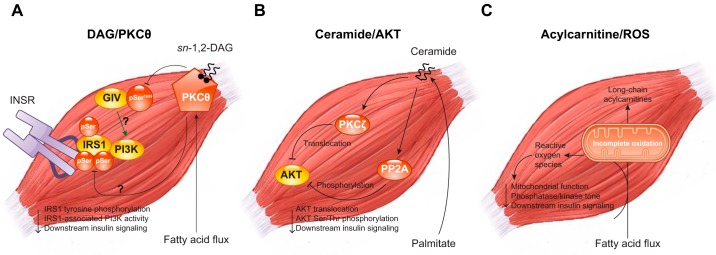FIGURE 17.
Proposed molecular mechanisms of lipid-induced skeletal muscle insulin resistance. A: diacylglycerol (DAG) has been proposed to cause muscle insulin resistance by activating protein kinase C-θ (PKCθ). The targets of PKCθ within the insulin signaling cascade are incompletely defined but may include insulin receptor substrate 1 (IRS1) and GIV. PI3K, phosphoinositide-3-kinase. B: ceramides have been proposed to mediate skeletal muscle insulin resistance by decreasing AKT activity through at least two mechanisms. PP2A, protein phosphatase 2A. C: incomplete mitochondrial fatty acid oxidation has been proposed to mediate skeletal muscle insulin resistance, either through direct effects of the resultant acylcarnitine species or through production of reactive oxygen species, which modulate various cellular processes.

